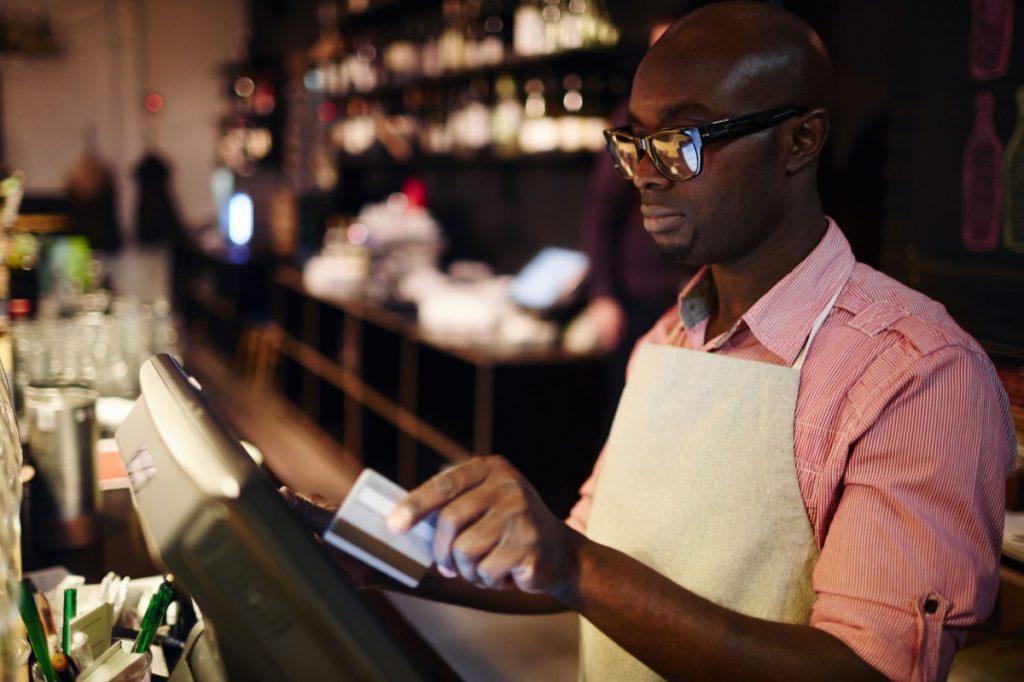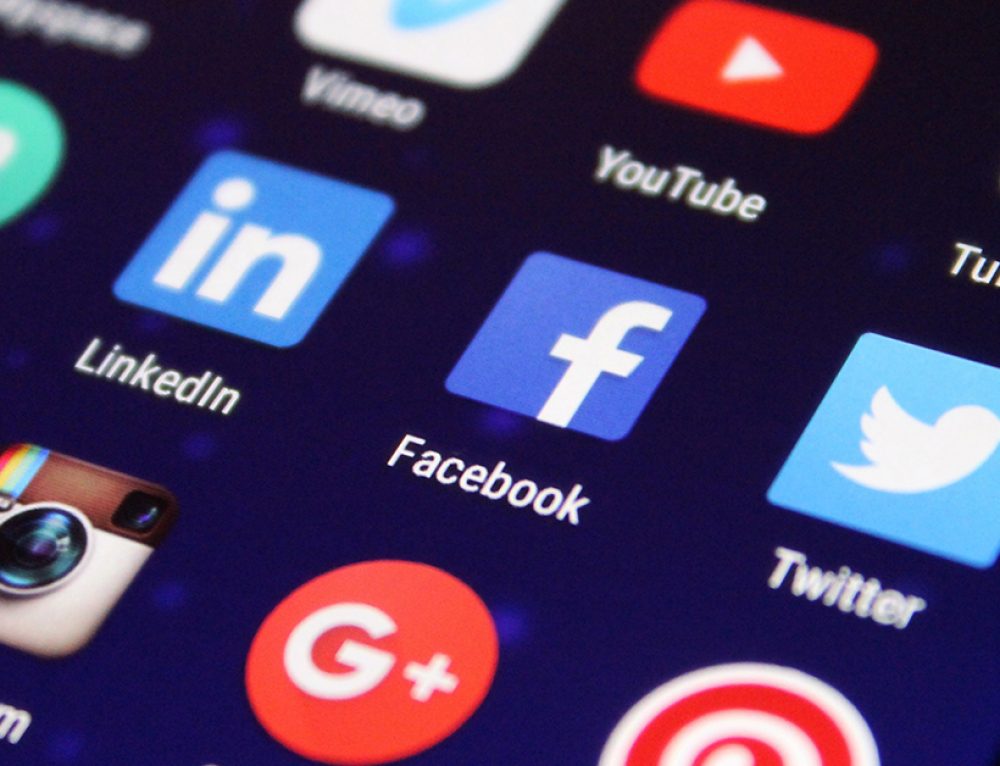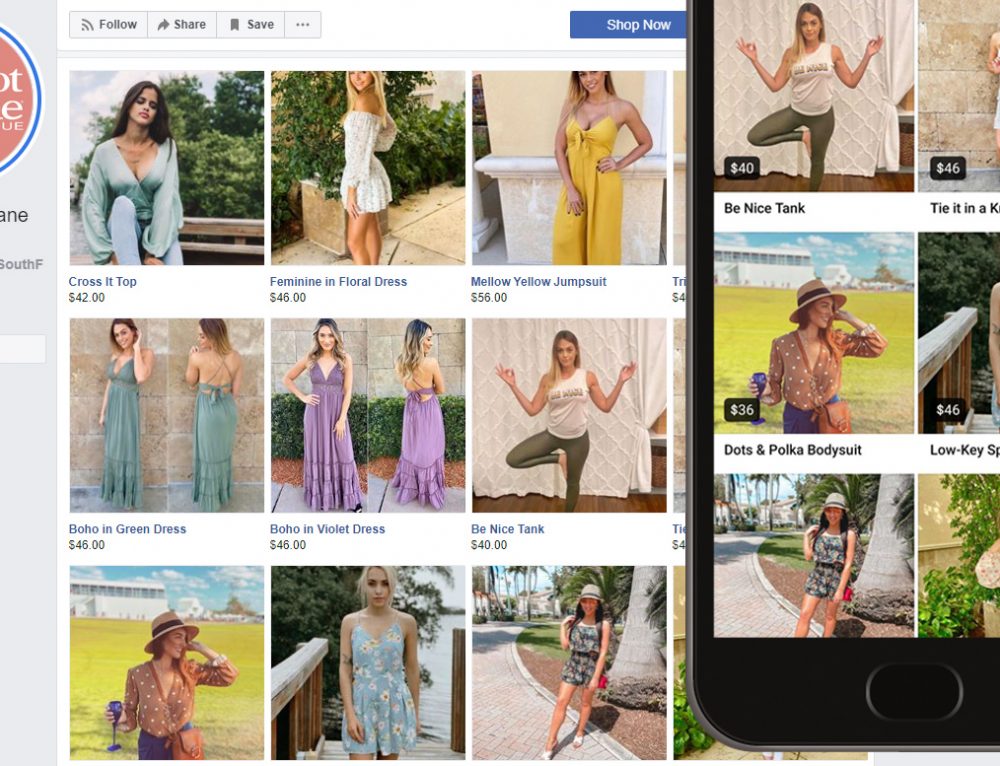
Local retail businesses are made of strong stuff, metaphorically and physically.
Brick-and-mortar retailers may have a challenge on their hands in competing with big box brands and ecommerce giants, but they’re far from being on the ropes. Better still, there are plenty of tactics that they can use to come out of this fight victorious.
Start Selling Online Now
If you aren’t already selling online, you should start doing so immediately.
“The number of brick-and-mortar stores venturing into the online market has increased in recent years, with many of these companies experiencing increased sales and substantial business growth,” Linnworks’ Aimee Goodsall says. Simply put, you could be missing out on a massive number of customers if you aren’t selling online. Need additional space to store equipment or inventory? A Super Easy Storage unit is the solution you’re looking for.
Taking your products to the online market can be extremely beneficial for smaller companies. By creating an online store, more people will be able to see what you’re selling. There is also software, like Clickfunnels, that can help you sell more products by creating various sales funnels that can encourage customers to purchase more products from your website. To get a better understanding of Clickfunnels, click here to learn more. Selling products online can really impact the success of a business.
It starts with a great website, says business consultant Larry Alton. “Do you have a website that’s responsive, loads quickly, provides contact information, answers questions, and provides value for your customers? If not, you’re already falling way behind the competition.”
Getting all of this in place is just the start, however. Don’t forget to advertise your online store, Alton continues. Include the URL on any new marketing material for your physical stores to encourage shoppers to engage with your brand online and offline.
If You Can’t Beat Them, Join Them
The big retailers are big for a reason. They are successful in what they do so you might want to consider listing your products on their site. For example, if you don’t have an online site you can sell your goods on then create a profile on Amazon while your site is being built and make money that way.
A lot of authors who are trying to get published often realize that amazon self publishing will actually be a better option for them because it allows them more freedom over what happens with their book. You never know, you might find yourself actually benefiting off the bigger companies and they help you increase the number of customers you sell to.
Drive Foot Traffic with Local Inventory Ads
Customers may be searching for products online, but that doesn’t mean they want to buy them online. Plenty of people still prefer shopping at their local store, particularly if they need an item quickly. Your retail storefronts can capture these buyers via Google Local Inventory Ads.
These ads work by displaying useful information to nearby shoppers on Google, as Productsup’s Hannah Augur explains: “When a user makes a product search on Google and that desired product is in stock at a nearby location, they may be served a Local Inventory ad, along with the tempting ‘in store’ label. When a shopper clicks the ad, they’re taken to the Local Storefront page. This features the product that was searched as well as information about the physical store.”
This information should be enough to convert the user from a searcher to a store visitor, explains Augur. Sears, for example, increased shop visits by 122 percent thanks to these ads.
These ads are different from traditional product listing ads, says DataFeedWatch’s Monica Axinte. “With Product Listing Ads you push your online inventory in front of shoppers, while with Local Inventory Ads your in-store inventory. Clicking on a PLA will direct users to your online store while clicking an LIA will direct them to the page of the nearest physical store.”
These two kinds of ads can be complementary, too. In fact, if you run both ads, Google lets you choose whether to direct nearby customers to your physical store or your online shop.
Get Found with Local SEO
Research by Google, Ipsos MediaCT and Purchased shows that:
- Half of people searching locally on a smartphone go to a store within a day.
- More than one-third of people who search locally on a desktop or tablet visit a store within 24 hours.
- More than three-quarters of local smartphone searches result in offline purchases.
A great local search presence is built on a concrete Google My Business presence, writes ecommerce expert Armando Roggio. “An effective Google My Business listing may increase your retail store’s chance of showing up for local searches or appearing in what SEO professionals call the local pack.” This is the prominent block of three business listings that show up at the top of almost all local searches.

Draw Foot Traffic With Click and Collect
While ecommerce giants like Amazon make ordering as easy as clicking a button, the same can’t be said for product delivery. Late or inconvenient deliveries and poor customer service continue to blight the customer experience.
Brick-and-mortar stores can take advantage of this by offering in-store pickups for items bought via the company’s website. Consumers appreciate the added convenience and flexibility, says HubBox’s Malena Finguerut. But stores also benefit.
“Recent studies corroborate common intuition, which suggests that a customer picking up a parcel in a store is more likely to purchase additional products than a customer who had their parcel delivered to his doorstep.”
Click and collect also solves a problem common among all physical retailers, says Pinterest’s Frank Fumarola. Customers get frustrated when they go into a store only to find out the store doesn’t have the product they want. That frustration is removed with click and collect. Further, the features allows brick and mortars to offer a kind of one-day order fulfillment that even Amazon can’t achieve in some areas.
Turn Your Store Into an Experience
Physical stores may struggle to compete on price and convenience, but they can provide in-store experiences that online retailers can’t hope to match.
Many leading brands like Apple, Tesla and Nordstrom are proponents of this tactic, McKinsey consultants Brian Gregg, Kelsey Robinson, Jess Huang and Sajal Kohli write.
“Nordstrom Local, a recent initiative from the upscale retailer, has launched new experiences, including an in-store bar with wine, beer, coffee, and juices; eight fitting rooms; alterations; convenient merchandise pickups and returns; manicures; and expert image consultations with its knowledgeable personal stylists,” they note.
There’s no reason why local retailers can’t follow in the footsteps of these big brands. Take London-based Late Night Chameleon Café, for example. The fashion retailer offers a library of first editions and out-of-print books, a selection of rare vinyls, and a bar for shoppers to enjoy. They also offer a private selection of unique environmentally friendly products from mainstream designers that can be accessed by appointment only.
While these upscale experiences may seem like expensive stunts, they pack serious ROI, says PwC’s Steve Barr. The stores that implement these experiences often far outpace their competitors both in sales and profitability.
Make Customers Feel at Home
Brick-and-mortar retailers can offer warm welcomes and personalized service that contrast starkly with the cold, blank screen of an ecommerce store. In fact, plugins, such as the wordpress sms marketing plugin, could add in some warmth so customers will feel at ease.
“Whether or not you have an online presence, the best way to compete with online stores is to build long-term relationships with your customers by providing excellent customer service,” consultant and business writer Susan Ward says.
This is the strategy that Best Buy used to compete with Amazon, explains New York Times reporter Kevin Roose. When former CEO Hubert Joly joined the company, he made customer service a priority and visited several stores to understand what employees struggled most with. This led to the improvement of an internal search engine and the retraining of employees so that customers could receive better consultations.
Employee morale was also boosted by the reintroduction of a much-loved staff discount. As a result, employees were more engaged with their jobs and better equipped to help customers.
Little things such as incorporating a staff discount can help to drastically increase the work rate of your employees which, in turn, can give your customers a better shopping experience. Not only that but having an HR software that is used across the business for numerous activities, like the payroll, can help to boost morale even further. After all, if your employees aren’t enthused towards the business, that slip in morale can really hurt the bottom line. Learning how to increase employee morale and job satisfaction is a key part of any business plan.
Let Customers Pay Their Way
At Amazon, purchases can be made by clicking a single button. How easy is it for customers to pay at your retail stores?
GrowBiz Media CEO Rieva Lesonsky says it is imperative to accept as many payment options as possible. This should include mobile wallets like Apple Pay. Smartphones and other mobile devices can also be turned into card readers and used to accept payment so that checkout is as fast and simple as possible.
You could even consider offering more flexibility when it comes to payments, Vend’s Francesca Nicasio writes. “If it makes sense for your business, why not look into partial payments, split payments, and layaways? Giving shoppers more options for how they pay could be just the thing that sets you apart from your competitors.”

Connect With the Community
“Customers are more likely to support local stores when they see the business interacting with other parts of their community,” says Simply Stated Media founder Raubi Marie Perilli. Perilli recommends that stores support local charities or sports teams, help with local events, and form partnerships with other businesses in the area.
You don’t have to be a small business to win big with this. Franchises and chains can also work with their communities as long as they approach them genuinely and honestly. This should be an online effort as much as an offline one. Engaging your target market on social media is equally important, writes Darwin co-founder George Georgallides.
“Even small businesses with a large social media presence can compete with large online retailers because the power of local social networks will bring new customers or retain existing ones with constant, easy reminders of quick-to-access stores.”
Install In-Store Analytics
Try to capture as much data as possible in your stores. You don’t need a huge database like one of Amazon’s to turn in-store data into practical business decisions.
“Conventional retailers who choose not to employ the use of brick-and-mortar analytics in their stores are missing out on several key opportunities that benefit both their businesses and the customers who shop there,” says Samsung’s Jason Claybrook.
Claybrook explains that retailers can use in-store analytics and tools from companies like Trade Beyond to build highly specific profiles of their customers. These profiles can then form the basis of targeted advertising aimed at turning visitors into customers and one-off customers into loyal fans. Data can also be used to inform inventory, staffing and product placement decisions.
Retail expert Bob Phibbs points out that these kinds of systems are already in place – and being put to use in creative ways. “Lolli & Pops, who bills themselves as an encyclopedia of the world’s finest candies and confections, is implementing facial-recognition programs in their stores,” he writes. “This allows their sales associates to see VIP shopper preferences and even allergy information so they can offer new creations and locate old favorites quickly.”
Differentiate In-Store and Online Pricing
People are conditioned to think that online is cheaper. Showing them that’s not always the case could make them think twice about defaulting to Amazon.
“Offering a better deal in-store could be a double-edged sword, but it can drive traffic to brick-and-mortar stores and creates an opportunity to engage with customers in a more meaningful way,” says Studio 15 CEO Jia Wertz. Discounting in-store prices can be a great way to keep price-conscious customers from looking elsewhere.
In-store pricing doesn’t have to be cheaper for physical retailers to compete, however. Culture of Profit founder Rafi Mohammed points out that brick and mortars could make more money by capturing “the premium that some customers place on purchasing in-store.”
This is the double-edged sword Wertz is talking about. While some shoppers to find the cheapest price online, many are still willing to pay more for an in-store experience.
Mohammed recommends local retailers keep pricing consistent if Amazon and other ecommerce brands aren’t taking a significant number of customers. If you are losing customers to online retailers, however, Mohammed recommends price-matching where possible. But this should be viewed as a temporary measure while you create enticing in-store experiences.
Bonus Tip: Start Small
Don’t adopt the advice above wholesale. Try all 10 tactics at once and your business could quickly hit the canvas. String one, two or even three strategies together, however, and you could be on for a winning combination. Fold each idea into your business slowly, measure the results and make changes as you learn.
Images by: Mavoimage/ 123RF.com, rawpixel/ 123RF.com, Dmitriy Shironosov/ 123RF.com





